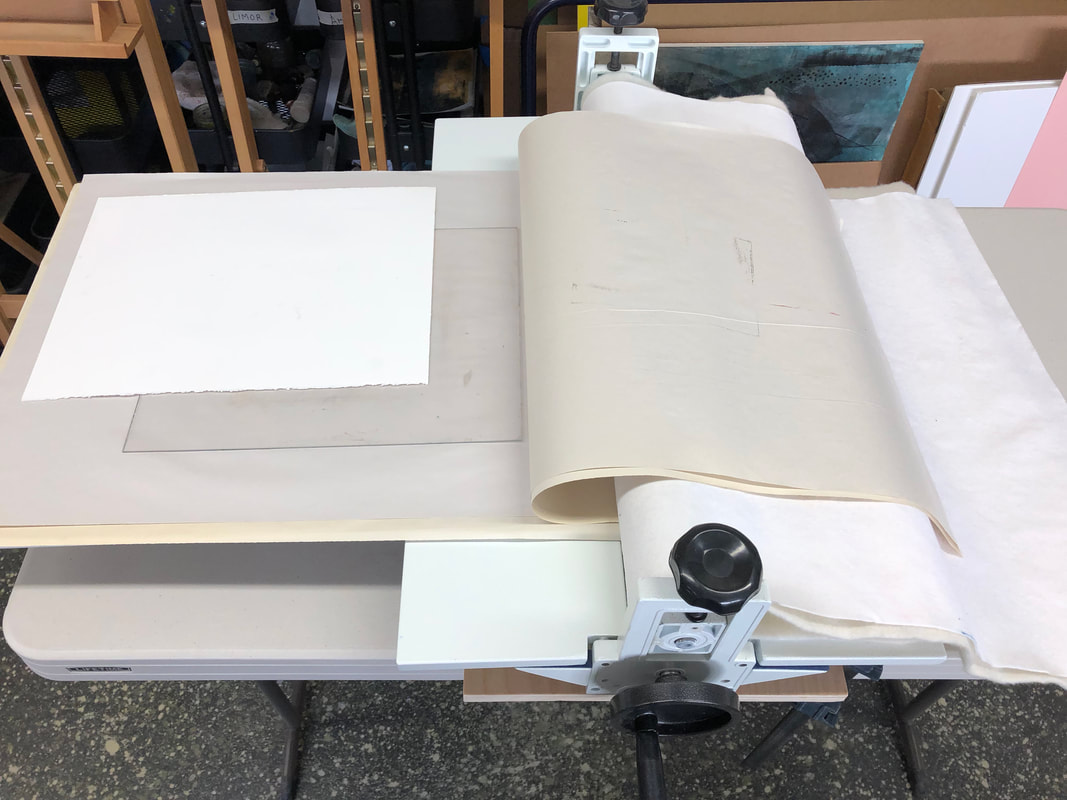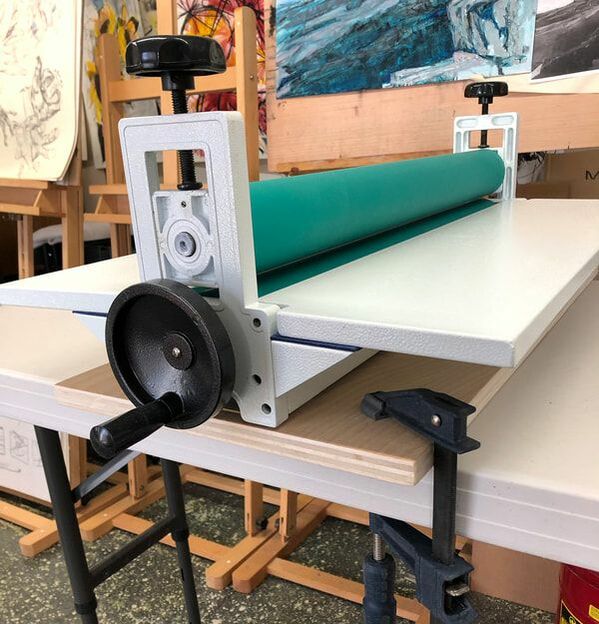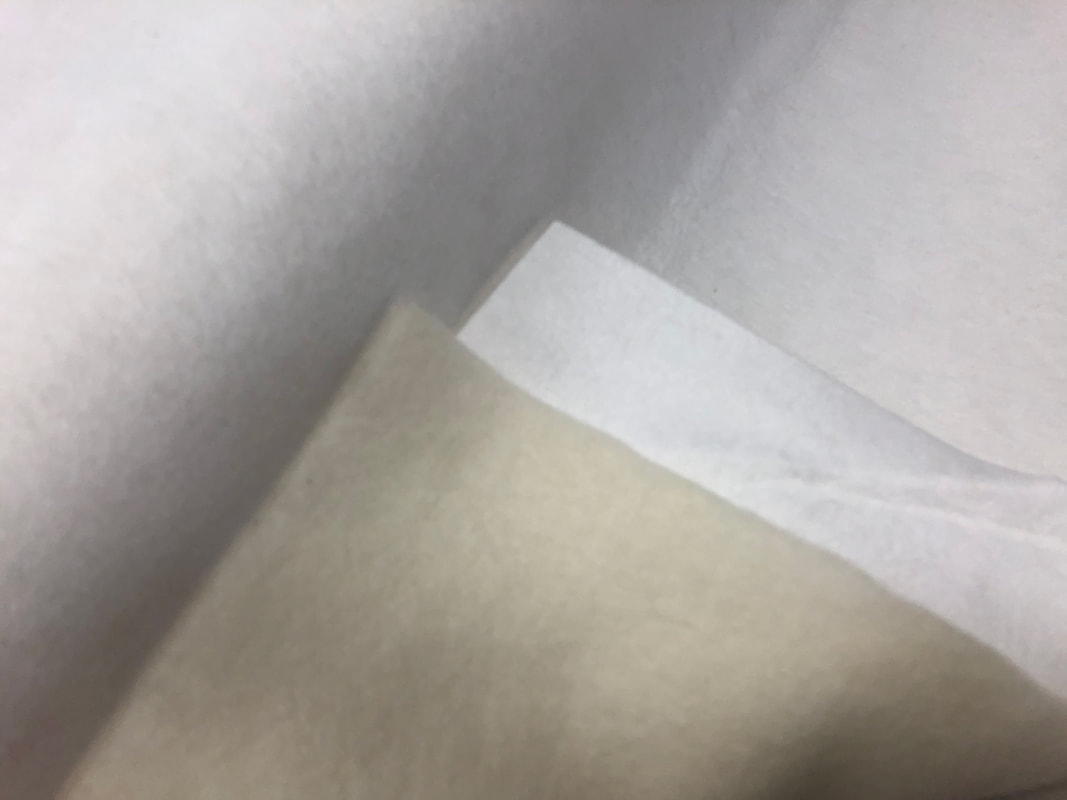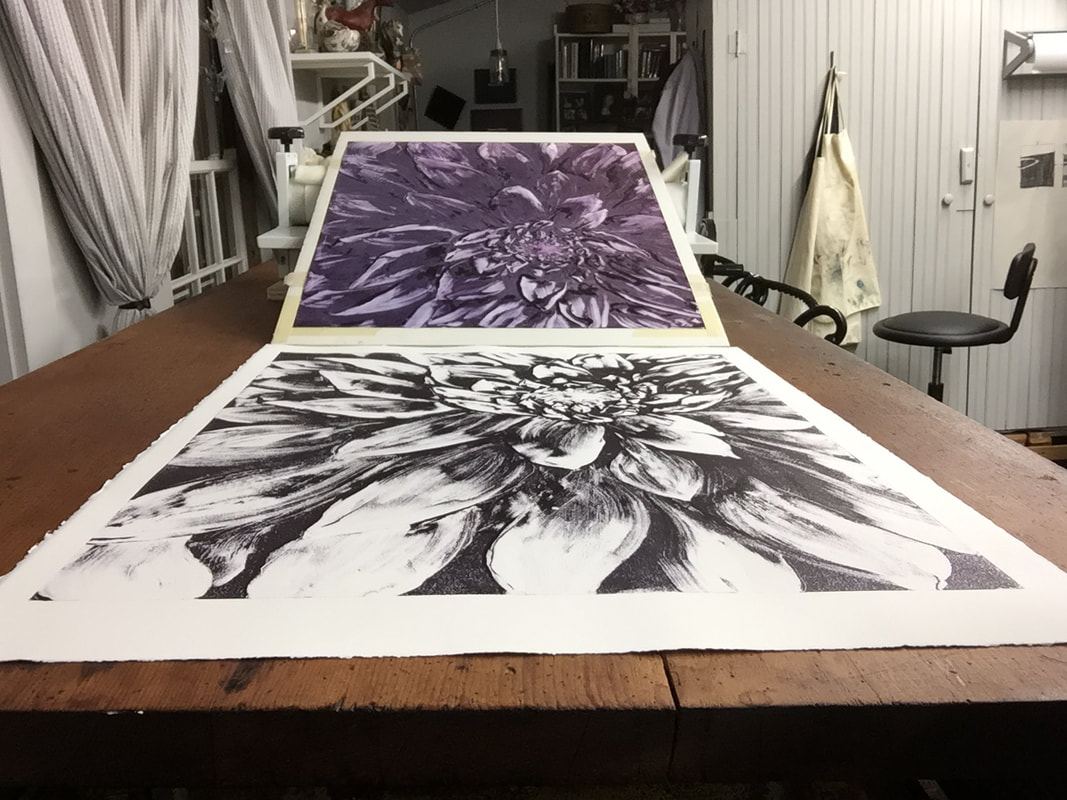|
One of the limitations to printmaking in a home studio is the high cost of a printing press. There are quite a few options for printing by hand, from Japanese style barens to rolling pins to spoons! Those all work well in certain situations, and for acetone transfers they’re essential, a press just won’t work. But for many monotypes and collagraphs, a press can really speed up the process...if you can afford one! About a year ago I came across a device called a cold mount laminator (there are electric hot laminators too), designed to adhere photographic prints or other artwork to backing boards of various types. I wanted to try it for adhering sanded pastel paper to foam core before starting a painting, since it’s really tricky to mount a finished pastel to a backing board during framing, without being able to touch the surface or flip the painting over. I found a company in Washington State called Pacific Mount, which specializes in this kind of mounting and sells all the products you need: adhesives, boards of all sizes, and laminating machines. When I saw their 25” laminator, it struck me that it was extremely similar in form to a printing press for etching or intaglio: two opposing drums with a crank that rolls your plate and paper between them. It has two knobs to adjust the pressure, and enough space for a flat bed to support the work, plus some cushioning material. The company was great about answering my questions (“Um, no, we haven’t heard of anyone using it this way, but give it a try!”), and the laminator is very affordable—especially compared to a “real” press which can run thousands of dollars. So I was excited to give it a spin. And it worked! Really well! The body of the laminator is metal, so it’s fairly heavy. The bed folds up for storage or transport, and I use a very small bungee to hold it closed when not in use. The drums are rubber, and while the pressure knobs are plastic, the rest of the threaded pressure adjustment is metal, and the whole thing feels robust. Monotype doesn’t require the same level of pressure that intaglio does, since you’re not trying to push dampened paper into incised areas of the plate. All the texture that you create is on the surface of the plate, and can only be printed once or maybe twice (the ghost print) before the ink is used up. So I’ve found the pressure of the rubber drums to be quite adequate. I’ve fastened the laminator down to a piece of birch-faced plywood, which can in turn be clamped onto my work table so it doesn’t slide during a print. And I do think that a larger diameter crank handle would be easier to use, and allow me to crank with one hand while guiding my paper through the bed with the other, so I’m looking for a way to modify or replace the handle. A “real” press has a heavy metal bed that rolls back and forth between the drums to support a plate and paper, and several specialized felt blankets to cushion the work and spread the pressure evenly. I’ve had good results using a piece of 3/16” foam core as a bed, and I’ve also used a sheet of plexiglas and masonite—all are fine. The traditional combination of blankets is a thin sizing catcher next to the paper, a thick cushion blanket, and a thin pusher blanket on top. These blankets can add up to a thickness of 3/4 inch, which is the largest space that the laminator can have between the drums. So I’ve left out the thick cushion blanket, and use only two blankets: the catcher is a very thin pressed all-wool felt that I purchased from a specialty printmaking supply shop, and the pusher blanket is a thicker wool felt that I got at a local fabric store. (I’ll link to all the materials at the end of this article.) The important quality of the blankets is that they’re natural wool, which withstands the repeated pressure better than synthetic felt, and that the blanket that’s closest to the paper does not have a weave that could transfer texture to the paper under pressure. Back in school, I was always taught that the blankets are not washable, and any student who got ink on them would be drawn and quartered and then have to buy replacement blankets and a round of drinks for the entire art department. Now I suspect that if you got water miscible ink, like Akua, on the blankets, they could in fact be gently washed and laid flat to dry. But it’s a good idea to put a few sheets of newsprint under your plate and on top of your paper as you run it through the press, just to catch any stray ink and spare your blankets. There are a few things that are good to remember. First, if you’re new to printmaking, remember that the image on your plate will be reversed horizontally on your paper. That hardly matters unless you have text in your image! Second, protect the drums on your press—in this case, they’re rubber and could be damaged. If you’re trying collagraph and adding texture that stands up above the surface of your plate, for example putting an inked leaf or vine on the plate, I recommend reinforcing the blankets with a piece of foam core laid on top. The foam can deform on one side while staying smooth on the other, sparing any indentation on the upper rubber drum. Third, wipe everything down, including your hands, before you lay your paper on the plate and put your work on the press. Stray ink on the borders of your image is just disappointing. Printmaking is a very malleable process, that rewards you for experimentation and for thinking through your process before you start. Peeling the paper away from the plate is like opening presents on Christmas...anticipation, some trepidation, sometimes glee and sometimes disappointment. When it works, the texture of a print is totally unique to the medium. Some parts of the monotype process are uncontrollable, which is actually great if you’re looking for a way to loosen up your work! Prints can be run through the press multiple times with different colors, disparate methods can be combined for a single print, and prints can be overpainted with watercolor, acrylic, pastel, ink or many other mediums. If you haven’t tried it yet, I hope you’ll give it a shot! I’m by no means an expert printmaker, but if you have questions please leave them below, and I’ll try my best to answer. Pacific Mount: www.pacificmount.com/products/laminators-and-accessories They have 25” and 39” laminators! Etching blankets: www.takachpress.com/access/blankets Post update: I’ve gotten many questions about how the laminator performs with various kinds of plates. I’ve tried monotypes on plexiglas, metal and Yupo paper; engravings on plexiglas and metal, collagraph plates made from mat board, found objects and TetraPak cutouts, mounted and unmounted linoleum blocks. The laminator has pulled great prints from all of them! I don’t generally make large editions, so I can’t speak to wear and tear on the drums after hundreds of prints—but I’ve had mine in frequent use for about three years now, and it’s going strong. I highly recommend trying it if you’re looking for an alternative to a hand baren! (The only process I prefer to do by hand at this point is mokuhanga. Getting the delicate patterns of wood grain to transfer with transparent ink is best done with a Japanese bamboo baren.)
24 Comments
|
Alexia Rosoff Wilber
News and notes about art. Archives
July 2020
Categories
All
|




 RSS Feed
RSS Feed
